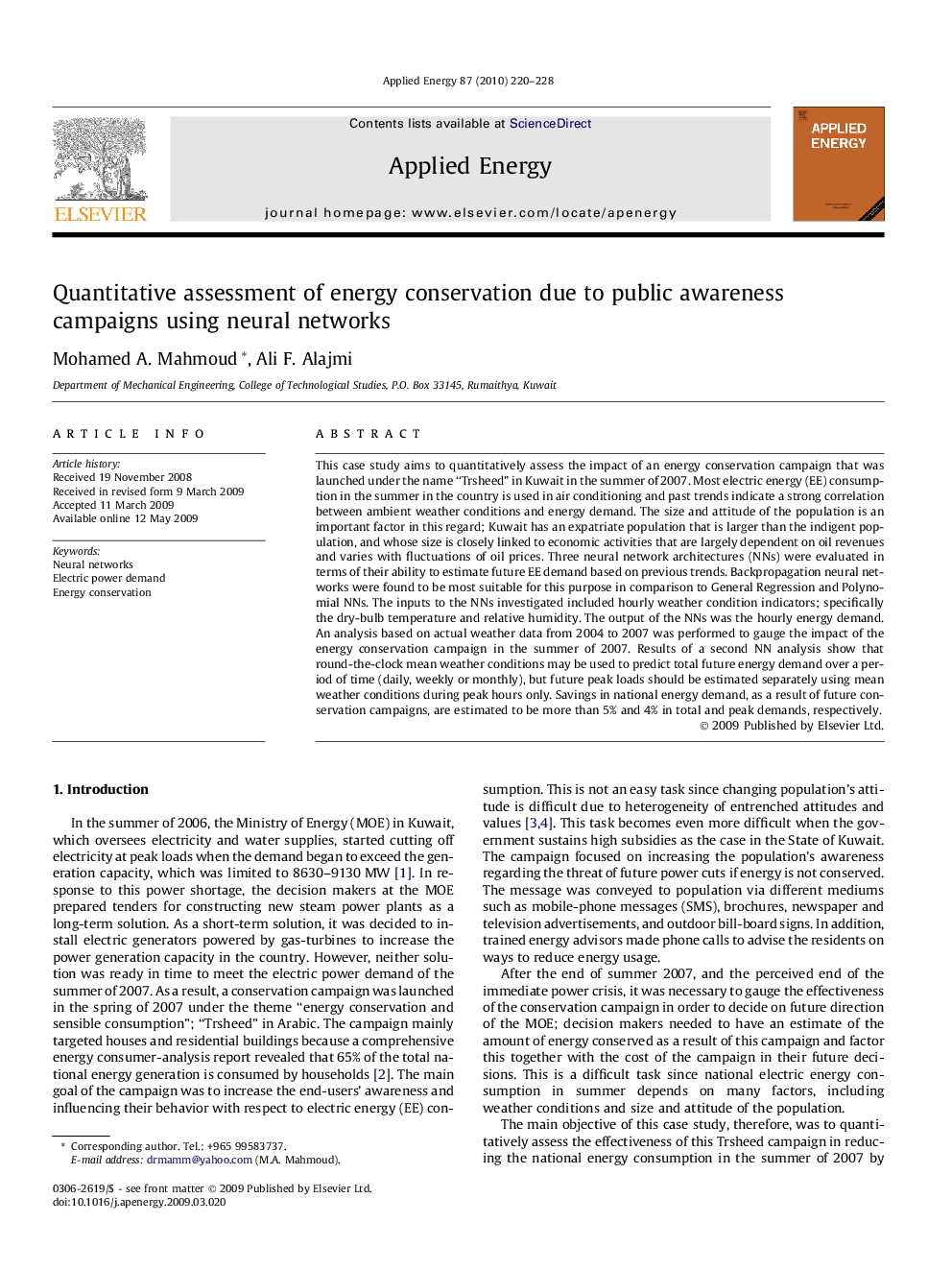| کد مقاله | کد نشریه | سال انتشار | مقاله انگلیسی | نسخه تمام متن |
|---|---|---|---|---|
| 244891 | 501963 | 2010 | 9 صفحه PDF | دانلود رایگان |

This case study aims to quantitatively assess the impact of an energy conservation campaign that was launched under the name “Trsheed” in Kuwait in the summer of 2007. Most electric energy (EE) consumption in the summer in the country is used in air conditioning and past trends indicate a strong correlation between ambient weather conditions and energy demand. The size and attitude of the population is an important factor in this regard; Kuwait has an expatriate population that is larger than the indigent population, and whose size is closely linked to economic activities that are largely dependent on oil revenues and varies with fluctuations of oil prices. Three neural network architectures (NNs) were evaluated in terms of their ability to estimate future EE demand based on previous trends. Backpropagation neural networks were found to be most suitable for this purpose in comparison to General Regression and Polynomial NNs. The inputs to the NNs investigated included hourly weather condition indicators; specifically the dry-bulb temperature and relative humidity. The output of the NNs was the hourly energy demand. An analysis based on actual weather data from 2004 to 2007 was performed to gauge the impact of the energy conservation campaign in the summer of 2007. Results of a second NN analysis show that round-the-clock mean weather conditions may be used to predict total future energy demand over a period of time (daily, weekly or monthly), but future peak loads should be estimated separately using mean weather conditions during peak hours only. Savings in national energy demand, as a result of future conservation campaigns, are estimated to be more than 5% and 4% in total and peak demands, respectively.
Journal: Applied Energy - Volume 87, Issue 1, January 2010, Pages 220–228